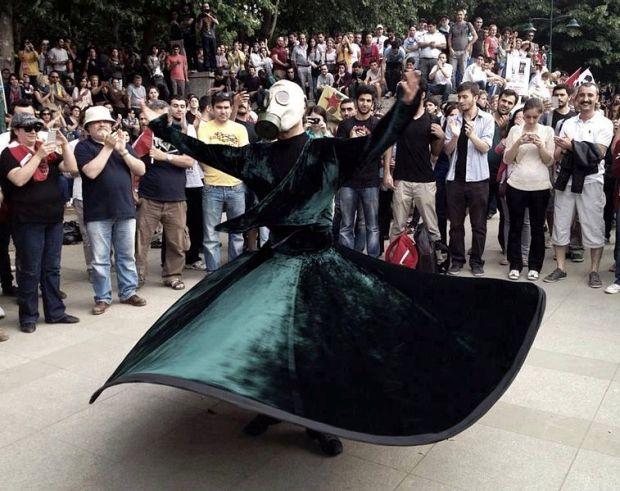The Fight for the Soul of Istanbul
A whirling sufi wearing a gas mask, among the protesters in Istanbul’s Gezi Park earlier this week. (PHOTO: Wiki Commons/Azirlazarus)
Turkey has been gripped with riots and protests for a week and a half now.
The protests began over what, at first glance, looks like a routine town-planning issue.
A proposal to knock down a park and build a mall.
But it’s blown up into a confrontation with the conservative government of Recep Tayyip Erdogan.
So we’ve been trying to dig into the roots of the issue.
Gezi Park, in Taksim Square, is the heart of the protest movement.
“The atmosphere there is like a carnival today.” says Sibel Bozdogan.
Bozdogan is a Turkish-American architectural historian, who teaches at Harvard and at Bilgi university in Istanbul.
“The protests are larger than just the park,” she says. “I think it is a protest in general about the larger neo-liberal agenda of this government.”
The architectural disputes are a metaphor for bigger splits in Turkish society, Bozdogan adds.
The park and the square symbolize the era of Turkey’s secular modernization when it became a republic, after the overthrow of the Ottoman Empire in the early 20th century.
Erdogan is trying to erase that and reach back to an Islamic and Ottoman past.
The young people, says Bozdogan, are trying to preserve Istanbul’s cosmopolitanism.
